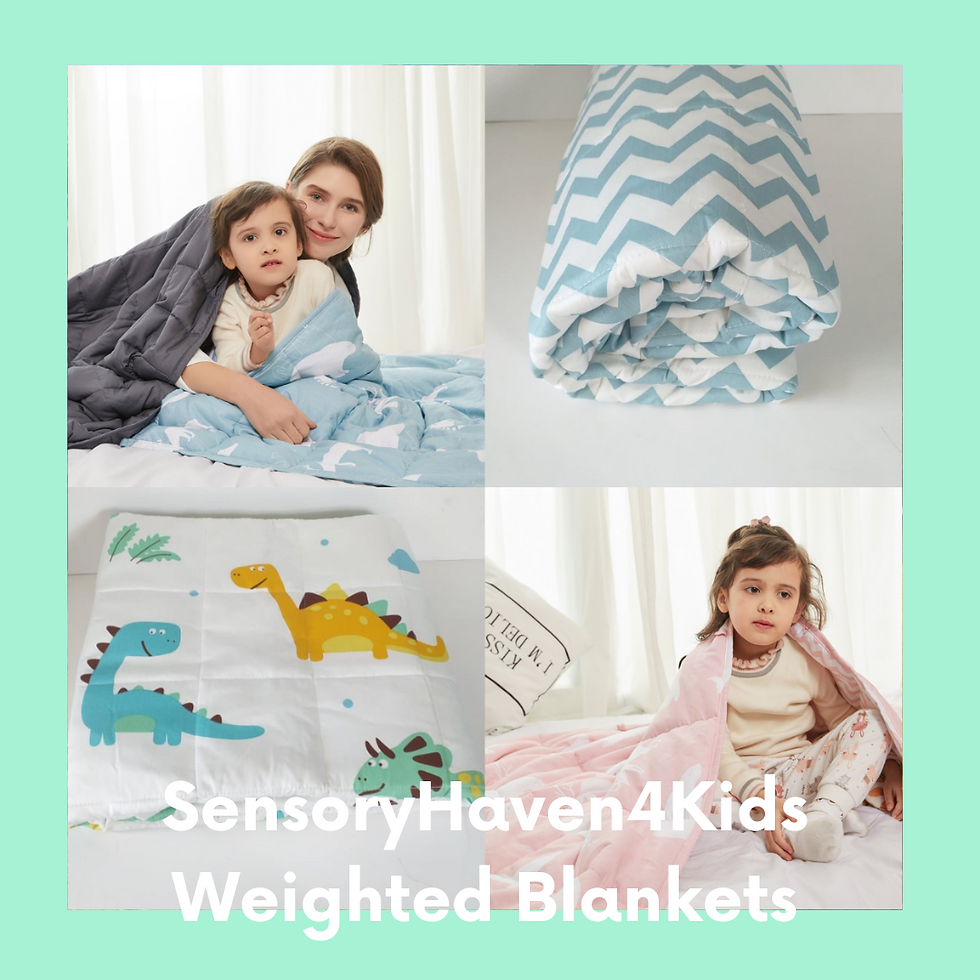Fidget Toys and Their Benefits
- sensoryhaven4kids
- 5 days ago
- 4 min read
In the quiet moments when a child’s fingers find their way to a small, spinning toy or a soft, squeezable object, something wonderful is happening. These simple tools, known as fidget toys, are more than just playful distractions. They hold a special place in helping children navigate their sensory world with calm and confidence. As someone who has seen firsthand the positive impact these toys can have, I’m excited to share the many ways fidget toys can support children’s well-being and growth.
Understanding the Fidget Toys Advantages
Fidget toys come in many shapes and sizes, from spinners and cubes to textured balls and stretchy bands. Their charm lies in their ability to engage the senses gently and consistently. For children with sensory processing differences, anxiety, or autism, these toys offer a soothing outlet for restless energy and overwhelming feelings.
One of the key advantages of fidget toys is their ability to improve focus and concentration. When a child’s hands are busy with a tactile object, their mind can settle more easily on the task at hand. This is especially helpful during schoolwork or quiet time, where distractions can quickly take over. The repetitive motion of spinning, squeezing, or clicking provides a calming rhythm that helps regulate attention.
Another wonderful benefit is the reduction of anxiety and stress. The sensory input from fidget toys can act like a gentle anchor, grounding children when emotions run high. This can be a game-changer during moments of overwhelm, helping children feel more secure and in control.

How Fidget Toys Support Sensory Needs
Children with sensory processing differences often experience the world in a way that can feel intense or confusing. Fidget toys offer a safe and manageable way to explore sensory input. For example, a soft, squishy toy can provide comforting pressure, while a textured cube might offer stimulating touch that helps a child stay alert.
These toys also encourage fine motor skill development. Manipulating small objects strengthens hand muscles and coordination, which are essential for everyday tasks like writing, buttoning clothes, or using utensils. The variety of textures and movements available in fidget toys means children can find the perfect fit for their sensory preferences.
In addition, fidget toys can be a bridge to social interaction. Sharing a favorite toy or demonstrating how it works can open up conversations and connections with peers, fostering a sense of belonging and confidence.
Exploring Different Types of Fidget Toys
There is a delightful range of fidget toys available, each offering unique sensory experiences. Here are some popular options and their specific advantages:
Fidget Spinners - These provide smooth, continuous spinning motion that can be mesmerizing and calming.
Stress Balls - Soft and squeezable, they offer deep pressure input that can relieve tension.
Fidget Cubes - Compact and versatile, with buttons, switches, and rollers to keep fingers busy.
Tangle Toys - Flexible and twistable, perfect for tactile exploration and hand strengthening.
Chewable Jewelry - Safe for children who seek oral sensory input, helping to reduce biting or chewing on inappropriate items.
Choosing the right fidget toy depends on the child’s individual needs and preferences. It’s helpful to observe which textures, movements, or pressures they respond to best and offer a variety of options to explore.

Practical Tips for Using Fidget Toys Effectively
To make the most of fidget toys, it’s important to introduce them thoughtfully and with clear purpose. Here are some practical recommendations:
Set clear expectations: Explain when and where the toy can be used, such as during homework or quiet reading time.
Encourage choice: Allow the child to select their preferred toy to increase engagement and comfort.
Use as a tool, not a distraction: Monitor use to ensure the toy supports focus rather than diverting attention.
Incorporate into routines: Make fidget time a regular part of the day to build consistency and predictability.
Combine with other strategies: Pair fidget toys with calming techniques like deep breathing or visual schedules for a holistic approach.
By integrating fidget toys into daily life with intention, they become powerful allies in managing sensory needs and emotional regulation.
Embracing the Positive Impact of Fidget Toys
The journey of supporting a child with sensory challenges is filled with moments of discovery and growth. Fidget toys offer a gentle, accessible way to empower children to take charge of their sensory experiences. Their simple design belies the profound effect they can have on focus, calmness, and confidence.
If you’re curious to explore the fidget toys benefits further, I encourage you to visit trusted sources that offer carefully selected products designed with children’s unique needs in mind. Sensory Haven 4 Kids, for example, provides a wonderful range of sensory tools that can make a meaningful difference in everyday life.
Remember, every child’s sensory journey is unique, and finding the right tools is a step toward a brighter, more comfortable future. With patience, love, and the right support, fidget toys can be a beacon of calm and joy in a sometimes overwhelming world.













Comments